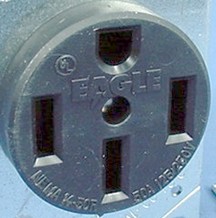healsing
Dec 12, 2018Explorer
Newbie! 30 amp to 20 amp converter
HI folks,
I'm brand spanking new to RVing.
The trailer I am attempting to make "usable" is a 1988 Companion Classic. Needs work.
My question: when using a 30 amp to 20 amp plug converter does it follow that a portion of the original 220 circuits will not work. Or does the adapter send current to both sides of the 220. I do not have the option of a 30 amp 220 connection. Only 20 amp 110. Some circuits are not working and I want to determine if this is normal or a malfunctioning adapter.
Thanks!!!!!
Rob
I'm brand spanking new to RVing.
The trailer I am attempting to make "usable" is a 1988 Companion Classic. Needs work.
My question: when using a 30 amp to 20 amp plug converter does it follow that a portion of the original 220 circuits will not work. Or does the adapter send current to both sides of the 220. I do not have the option of a 30 amp 220 connection. Only 20 amp 110. Some circuits are not working and I want to determine if this is normal or a malfunctioning adapter.
Thanks!!!!!
Rob
